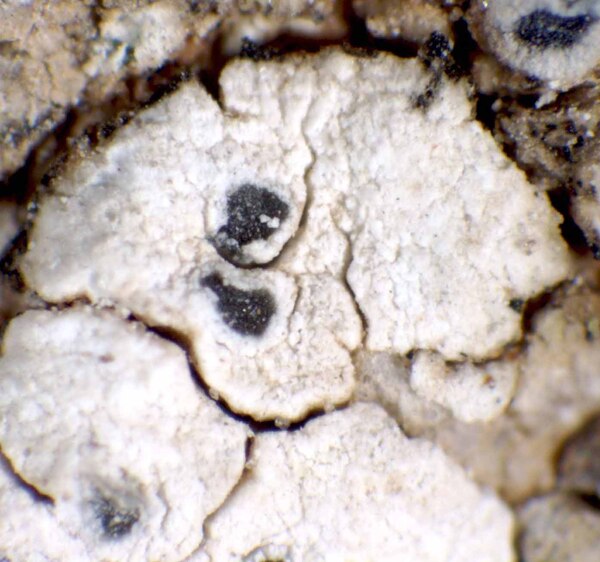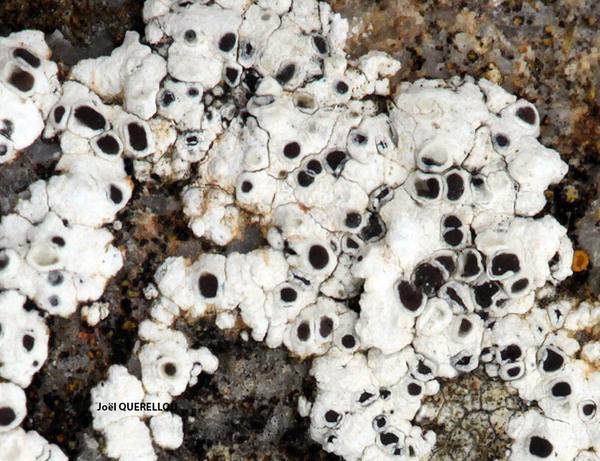Polyozosia bandolensis (B. de Lesd.) S.Y. Kondr., Lőkös & Farkas
in Kondratyuk & al., Acta Bot. Hung., 62, 1-2: 101, 2020. Basionym: Lecanora bandolensis B. de Lesd. - Bull. Soc. Bot. France, 101: 223, 1954.
Synonyms: Lecanora albescens var. bandolensis (B. de Lesd.) Clauzade & Cl. Roux; Myriolecis bandolensis (B. de Lesd.) Cl. Roux & Nimis
Distribution: C - Tosc (TSB 35190), Camp (Garofalo & al. 2010). Sar. S - Si.
Description: Thallus crustose, episubstratic, pure white, rimose-areolate, 0.2-0.5 mm thick, forming 0.5-2 cm wide patches, rarely incompletely delimited by a dark prothallus. Areoles 0.2-1.5 mm wide, more or less angular, the peripheral ones often larger and indistinctly radiating. Cortex 20-110 μm thick, filled with large crystals soluble in N; medulla white, I-, filled with crystals. Apothecia lecanorine, 0.2-0.5(-0.8) mm across, -3 per areole, long remaining immersed then subsessile, with a pale brown to black, flat disc and a thin, non- or only slightly raised, often partially bluish thalline margin. Thalline exciple up to 0.1 mm thick, corticate, the outer part often blue-green and N+ reddish brown, the inner part filled with small crystals; proper exciple 10-20 µm thick, colourless in inner part, blue-green in outer part; epithecium pale brown to greenish brown, the greenish parts N+ reddish brown, with small, yellowish brown crystals insoluble both in K and in N, and larger crystals soluble in N; hymenium colourless, 50-65 μm high, inspersed with small crystals in upper part, I+ blue; paraphyses coherent, simple or sparingly branched, 1.5-2 μm thick at mid-level, the apical cell up to 3 μm wide; hypothecium colourless. Asci 8-spored, elongate-clavate, very thin-walled, with a K/I+ blue, tall tholus penetrated by a faintly amyloid apical cushion, the wall K/I-, surrounded by a K/I+ blue outer layer, Lecanora-type. Ascospores 1-celled, hyaline, ellipsoid, (9-)10-13(-15) x 5-7 μm. Pycnidia dark, immersed, the wall blue-green in upper part. Conidia sickle-shaped, 14-20 x c. 1 μm. Photobiont chlorococcoid. Spot tests: thallus K-, C-, KC-, P-, UV-. Chemistry: thallus with low amounts of 2.7-dichlorolichexanthone. Note: a mostly coastal, probably Mediterranean-Atlantic lichen of calcareous or basic siliceous rocks; related to P. albescens, but a different species (see Bertrand & al. 2010).
Growth form: Crustose
Substrata: rocks
Photobiont: green algae other than Trentepohlia
Reproductive strategy: mainly sexual
Poorly known taxon in need of further study
Taxon bound to maritime-coastal situations
Commonnes-rarity: (info)
Alpine belt: absent
Subalpine belt: absent
Oromediterranean belt: absent
Montane belt: absent
Submediterranean belt: absent
Padanian area: absent
Humid submediterranean belt: absent
Humid mediterranean belt: rather rare
Dry mediterranean belt: very rare
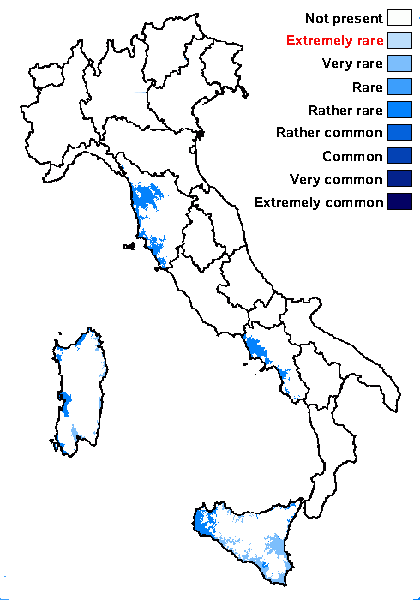
Predictive model
Herbarium samples


P.L. Nimis; Owner: Department of Life Sciences, University of Trieste
Herbarium: TSB (15641)
2001/11/25


P.L.Nimis; Owner: Department of Life Sciences, University of Trieste
Herbarium: TSB (38262)
2008.02.25
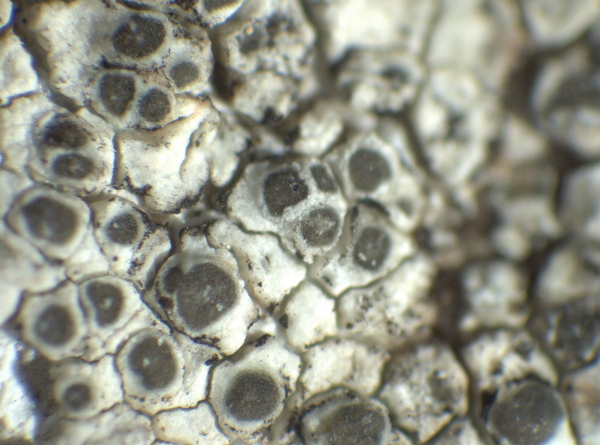

P.L.Nimis; Owner: Department of Life Sciences, University of Trieste
Herbarium: TSB (38262)
2008.02.25
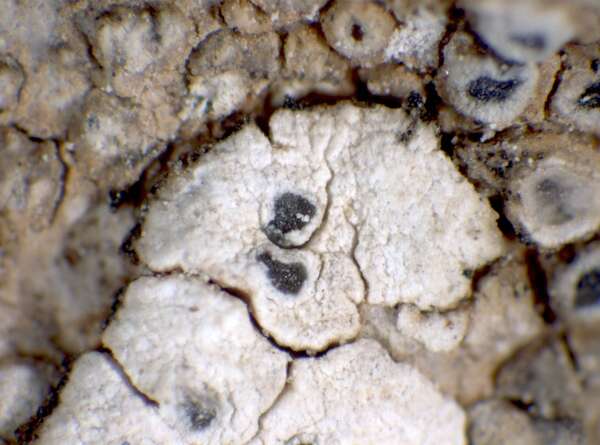

P.L. Nimis; Owner: Department of Life Sciences, University of Trieste
Herbarium: TSB (15641)
2001/11/25
detail of apothecia

Courtesy Danièle et Olivier Gonnet - Source: https://www.afl-lichenologie.fr/Photos_AFL/Photos_AFL_M/Texte_M/Myriolecis_bandolensis.htm
France, session AFL 2010 - sur basalte, littoral d'Agde - Hérault
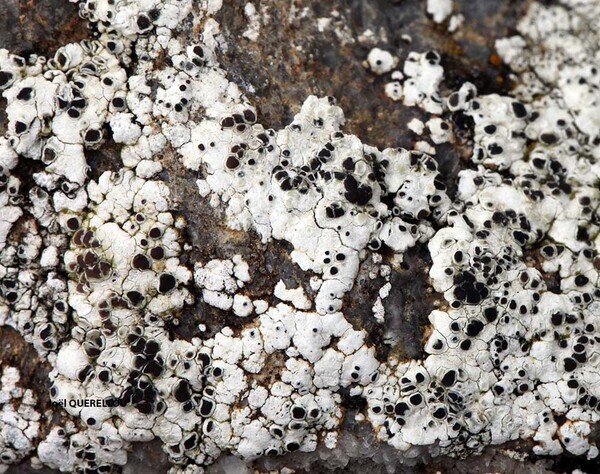
Joël Querellou - Source: http://www.lichensmaritimes.org/index.php?task=fiche&lichen=43&lang=en
France, L'Aber
Growth form: Crustose
Substrata: rocks
Photobiont: green algae other than Trentepohlia
Reproductive strategy: mainly sexual
Poorly known taxon in need of further study
Taxon bound to maritime-coastal situations
Commonnes-rarity: (info)
Alpine belt: absent
Subalpine belt: absent
Oromediterranean belt: absent
Montane belt: absent
Submediterranean belt: absent
Padanian area: absent
Humid submediterranean belt: absent
Humid mediterranean belt: rather rare
Dry mediterranean belt: very rare

Predictive model
| Herbarium samples |


P.L. Nimis; Owner: Department of Life Sciences, University of Trieste
Herbarium: TSB (15641)
2001/11/25


P.L.Nimis; Owner: Department of Life Sciences, University of Trieste
Herbarium: TSB (38262)
2008.02.25


P.L.Nimis; Owner: Department of Life Sciences, University of Trieste
Herbarium: TSB (38262)
2008.02.25


P.L. Nimis; Owner: Department of Life Sciences, University of Trieste
Herbarium: TSB (15641)
2001/11/25
detail of apothecia

Courtesy Danièle et Olivier Gonnet - Source: https://www.afl-lichenologie.fr/Photos_AFL/Photos_AFL_M/Texte_M/Myriolecis_bandolensis.htm
France, session AFL 2010 - sur basalte, littoral d'Agde - Hérault


